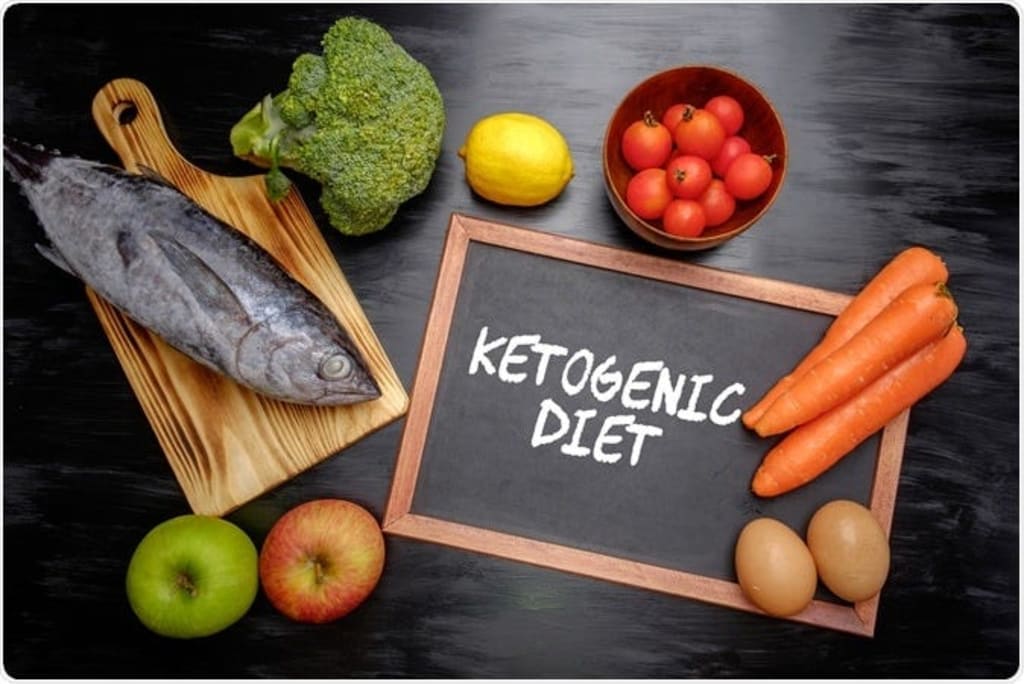HOW KETO DIET WORK FOR WEIGHT LOSS?
Understanding Popular Diets: The Ketogenic (Keto) Diet Are you overwhelmed by the plethora of weight-loss strategies and diet plans? Let’s explore one of the most talked-about diets: the ketogenic (or “keto”) diet. We’ll dive into what it is, how it works, and the science behind it.

IF YOU NEED PRINTED KETO DIET BOOK,CLICK HERE
Understanding Popular Diets: The Ketogenic (Keto) Diet
Are you overwhelmed by the plethora of weight-loss strategies and diet plans? Let’s explore one of the most talked-about diets: the ketogenic (or “keto”) diet. We’ll dive into what it is, how it works, and the science behind it.
What is the Keto Diet?
IF YOU NEED PRINTED KETO DIET BOOK,CLICK HERE

The ketogenic diet is a high-fat, low-carbohydrate eating plan that has been used for centuries to manage various medical conditions. In the 19th century, it was commonly employed to control diabetes. By the 1920s, it emerged as an effective treatment for epilepsy in children who did not respond to medication. Additionally, the keto diet has been explored in controlled settings for managing conditions such as cancer, diabetes, polycystic ovary syndrome, and Alzheimer’s disease.
In recent years, the keto diet has gained popularity as a weight-loss strategy, fueled by the low-carb diet trend that began in the 1970s with the Atkins diet. Unlike other high-protein, moderate-fat diets like Paleo, South Beach, and Dukan, the ketogenic diet is characterized by its exceptionally high-fat content — typically 70% to 80% of daily calories — along with moderate protein intake.
How Does It Work?

The keto diet’s weight-loss premise is based on drastically reducing carbohydrate intake, thereby depriving the body of glucose, its primary energy source. When glucose is scarce, the body starts producing an alternative fuel called ketones from stored fat — a process known as ketosis.
Normally, the brain relies heavily on glucose, requiring about 120 grams daily since it cannot store glucose. When carbohydrate intake is severely limited, the body initially uses stored glucose from the liver and breaks down muscle protein to release glucose. After 3–4 days, when these stores are depleted, insulin levels drop, and the body shifts to using fat as its main fuel source. The liver converts fat into ketone bodies, which then supply energy in the absence of glucose.
In healthy individuals, mild ketosis naturally occurs during fasting (e.g., overnight) or intense exercise. Advocates of the keto diet argue that with careful adherence, ketone levels should remain safe and not reach harmful levels (a condition called ketoacidosis). They also assert that healthy individuals produce sufficient insulin to prevent excessive ketone buildup.
What is Ketoacidosis?
Ketoacidosis is a condition where dangerously high levels of ketones cause the blood to become too acidic. This typically occurs in people with type 1 diabetes, who cannot produce insulin to regulate ketone production. In rare cases, ketoacidosis has been reported in non-diabetic individuals on prolonged very low-carb diets. Symptoms include excessive urination and dehydration, which can lead to serious complications.
The Keto Diet in Practice
IF YOU NEED PRINTED KETO DIET BOOK,CLICK HERE
There is no single “standard” ketogenic diet, but it generally involves reducing carbohydrate intake to less than 50 grams per day — less than what’s found in a medium plain bagel — and sometimes as low as 20 grams. A typical keto diet might consist of 70–80% of daily calories from fat, 10–20% from protein, and 5–10% from carbohydrates. For a 2000-calorie diet, this translates roughly to 165 grams of fat, 75 grams of protein, and 40 grams of carbohydrates. The protein intake is kept moderate to prevent excess protein from converting to glucose and disrupting ketosis.
Commonly banned foods on a keto diet include:
- Starches: breads, cereals, pasta, rice, and potatoes
- Sugary foods: cookies and fruit juices
- Most fruits and starchy vegetables
- Beans and legumes
Allowed foods are typically high in fat, including:
- Saturated fats: fatty meats, processed meats, lard, and butter
- Unsaturated fats: nuts, seeds, avocados, plant oils, and oily fish
Food lists may vary between different sources of keto diet plans, so it’s important to consult reliable resources and, if possible, a healthcare provider.
Understanding the ketogenic diet can help you make informed decisions about whether it’s the right choice for your weight-loss or health goals.
Following the Keto Diet for Weight Maintenance
Many programs suggest adhering to a ketogenic diet until you reach your target weight. To prevent regaining the lost weight, you can then adopt a cyclical approach: follow the keto diet for a few days each week or a few weeks each month, alternating with periods of higher carbohydrate intake.
Research Insights
Short-term studies indicate that the ketogenic diet can lead to significant metabolic improvements. Beyond weight loss, it has been associated with better health markers related to obesity, such as reduced insulin resistance, lower blood pressure, and improved cholesterol and triglyceride levels .
There’s also increasing interest in the potential benefits of low-carbohydrate diets, including the ketogenic diet, for managing type 2 diabetes. Several theories have been proposed to explain the weight-loss effects of the ketogenic diet, though not all have been consistently validated by research :
- Increased Satiety: The high-fat content of the diet may reduce food cravings, helping to control appetite.
- Hormonal Changes: Restricted carbohydrate intake may lower levels of appetite-stimulating hormones like insulin and ghrelin.
- Role of Ketone Bodies: Ketones, the primary fuel on the keto diet, might directly reduce hunger.
- Higher Caloric Expenditure: The process of converting fat and protein to glucose may increase overall calorie burn.
- Promotion of Fat Loss: Lower insulin levels may help promote fat loss while preserving lean body mass.
These factors contribute to the diet’s effectiveness, but individual responses can vary. More research is needed to fully understand the long-term impacts and mechanisms of the ketogenic diet.
Potential Pitfalls of the Keto Diet
Maintaining a very high-fat diet can be challenging. Extreme carbohydrate restriction may lead to temporary symptoms such as hunger, fatigue, mood swings, irritability, constipation, headaches, and brain fog. While these symptoms often subside, the limited variety of foods and exclusion of favorites like apples or sweet potatoes can make the diet difficult to stick to.
Long-term adherence to a ketogenic diet may carry risks such as increased likelihood of kidney stones, osteoporosis, and elevated uric acid levels (a risk factor for gout). Potential nutrient deficiencies could arise if a diverse range of recommended foods isn’t included. It is essential to focus not just on high-fat foods but also on a variety of meats, fish, vegetables, fruits, nuts, and seeds to ensure sufficient fiber, B vitamins, and minerals (iron, magnesium, zinc). Consulting a registered dietitian can help create a balanced ketogenic diet and minimize nutrient deficiencies.
Bottom Line
Current research on the ketogenic diet for weight loss is limited. Most studies have involved small participant numbers, were short-term (12 weeks or less), and lacked control groups. Short-term benefits of the keto diet include weight loss and improvements in cholesterol, blood sugar, and blood pressure. However, these effects are not significantly different from those of conventional weight loss diets after one year.
The exclusion of multiple food groups and potential for unpleasant symptoms may hinder long-term compliance. Emphasizing high-saturated-fat foods contradicts recommendations from the Dietary Guidelines for Americans and the American Heart Association and may adversely affect blood LDL cholesterol. However, the diet can be modified to focus on foods low in saturated fats, such as olive oil, avocado, nuts, seeds, and fatty fish.
The ketogenic diet might be an option for those struggling with other weight loss methods. The ideal ratio of fat, carbohydrates, and protein varies among individuals based on genetic makeup and body composition. Therefore, consulting a physician and a dietitian is recommended to monitor biochemical changes, tailor the meal plan to individual health conditions, and prevent nutritional deficiencies or other complications. A dietitian can also offer guidance on reintroducing carbohydrates after achieving weight loss.
A modified carbohydrate diet following the Healthy Eating Plate model may provide adequate health benefits and weight reduction for the general population.
About the Creator
william jane
EXPERT FOR HEALTH & FITNESS
Enjoyed the story? Support the Creator.
Subscribe for free to receive all their stories in your feed. You could also pledge your support or give them a one-off tip, letting them know you appreciate their work.






Comments
There are no comments for this story
Be the first to respond and start the conversation.